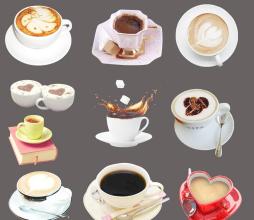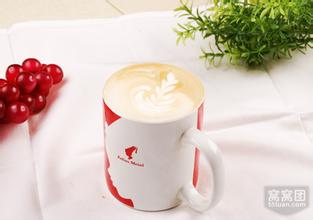Introduction to Coffee (3)
Coffee Grinding
Grind
"
Grinding is the decomposition of roasted coffee beans into small particles, because complete coffee beans cannot be directly used for extraction and cooking, and only after they are broken down into small particles can the essence be released.
You only need to remember the simplest point: the finer the grinding, the shorter the cooking time; the rougher the grinding, the longer the cooking time. A little more esoteric, this is the same as the principles of physics (forgive the wet gentleman is a liberal arts student), increase the surface area and contact area, then the hot water will be more fully exposed, of course, the faster it will be boiled.
When to grind is also a key point. Because once the coffee beans are ground into particles, they will be easily oxidized by the air, which will gradually lose their taste, so it is recommended that you brew and brew them. This kind of coffee is perfect.
Disc grinder
If you like to drink coffee and like to be freshly milled and boiled, you are recommended to enter a better portable hand-held grinder. Knife sharpening here wet is not recommended, because it is no different from the blender, the coffee powder will be very uneven.
The advantage of the grinding plate type is that its grinding uniformity is much better, which is more suitable for coffee extraction. High precision and adjustable thickness are also another advantages, and the thickness of powder can be selected according to different cooking utensils.
This is a portable hand artifact-- Japanese prolex mini
Grinding accuracy classification
It has been mentioned before that the different effects of grinding thickness on extraction. Fine coffee powder can speed up the extraction speed, while coarse coffee powder can reduce the extraction speed.
Let's take a look at the nine precision grades from fine to coarse:
one
Turkish powder: if the grinder can reach it, this is the finest coffee powder.
two
Fine espresso powder: a very fine coffee powder with the possibility of caking
three
Espresso powder: fine coffee powder, with caking possibility, often used in the production of espresso
four
Fine filter powder: between espresso powder and filter powder
five
Filter powder: coffee powder has the texture of high-grade cotton sugar for seasoning, which is very different from the third-grade fine powder and is often used for hand-brewing coffee.
six
Coarse filter powder: the accuracy is similar to that of sugar
seven
Coarse flour: suitable for immersion cooking, such as French kettle. The accuracy is similar to that of sea salt debris.
eight
Very coarse powder: similar in size to rock salt, only suitable for long-term immersion cooking
nine
Coffee fast: large pieces of coffee, not suitable for any brewing method
"
Coffee extraction
Extract
"
Coffee extraction is, in popular terms, brewing coffee. If you want to brew a good cup of coffee, you need to consider many factors. Grinding accuracy and contact time with water are undoubtedly the two most important factors. Other factors, such as water, water temperature and brewing ratio, can not be ignored.
The golden rule
The finer the grinding precision is, the larger the surface area of coffee is, the higher the extraction rate is, and the extraction rate can also be increased by prolonging the contact time with water. It can be said that no matter which way of brewing, as long as these two factors are balanced, the delicious coffee is not far away from us.
water
Water is the foundation, wet gentleman only say one thing, do not directly boil water with tap water from the faucet! The heavy metal in tap water is too high, which seriously affects the taste of coffee. In fact, just use ordinary mineral water, pure water or filtered water.
Water temperature
The best water temperature for brewing coffee is between 90 and 95 degrees. There is only one principle for water temperature: deep-roasted coffee beans need a slightly lower water temperature, while shallow roasted beans need a slightly higher water temperature.
Brewing ratio
The brewing ratio represents the concentration of the finished coffee. The brewing ratio of espresso is usually 1.5g, that is, 20 grams can make 30g espresso, while the standard ratio of hand brewing or French presser is 1:15, that is, 20g coffee can make 300g coffee drink.
By adjusting the brewing variables, we can find unknown tastes and create new flavors, which is also one of the great joys of coffee.

Important Notice :
前街咖啡 FrontStreet Coffee has moved to new addredd:
FrontStreet Coffee Address: 315,Donghua East Road,GuangZhou
Tel:020 38364473
- Prev

How to use bean grinder correctly to help coffee extraction?
In coffee life, baristas constantly study how to make better coffee, and constantly try the different flavors of coffee beans from different places, the different tastes brought by various brewing utensils, and the personalities shown by various brewing methods. however, the importance of bean grinders to all this is often overlooked. Among the factors that determine the taste of coffee brewing, the bean mill is the hardware factor and the technology is the software factor. that
- Next

20 ways of ingenious use of coffee grounds
1. Plant fertilizer spray mix half a cup of coffee grounds with warm water, put it in a spray can and spray it directly on the plant every day. 2 change the color of hydrangea flowers will change according to the acidity and alkalinity of the soil. Sprinkle coffee grounds on the soil and water them. This will make the soil PH value acidic, and the hydrangea flowers will change from pink to blue. (there is a kind of hydrangea at home.
Related
- Beginners will see the "Coffee pull flower" guide!
- What is the difference between ice blog purified milk and ordinary milk coffee?
- Why is the Philippines the largest producer of crops in Liberia?
- For coffee extraction, should the fine powder be retained?
- How does extracted espresso fill pressed powder? How much strength does it take to press the powder?
- How to make jasmine cold extract coffee? Is the jasmine + latte good?
- Will this little toy really make the coffee taste better? How does Lily Drip affect coffee extraction?
- Will the action of slapping the filter cup also affect coffee extraction?
- What's the difference between powder-to-water ratio and powder-to-liquid ratio?
- What is the Ethiopian local species? What does it have to do with Heirloom native species?

